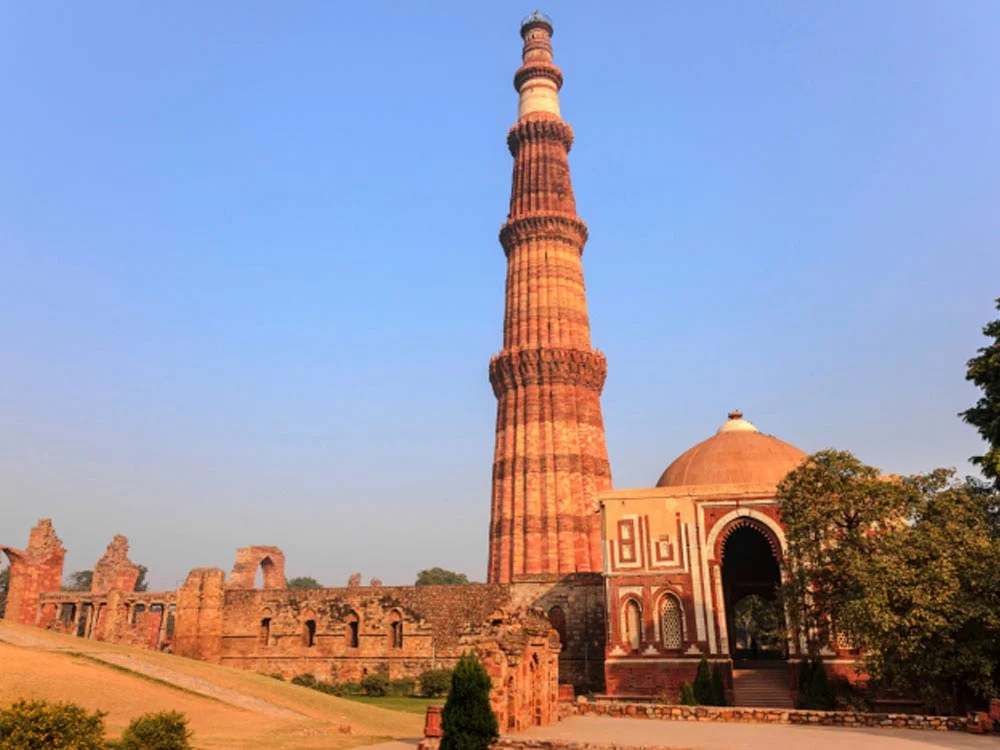Introduction:
Delhi, the capital city of India, holds within its bounds a treasure trove of architectural wonders that speak volumes about the rich history and cultural tapestry of the nation. Among these magnificent structures, the Qutub Minar stands tall as a testament to the harmonious coexistence of diverse influences. Originally conceived as a victory tower and subsequently repurposed as a mosque, the Qutub Minar not only boasts impressive architectural features but also embodies the fascinating amalgamation of Hindu and Islamic traditions. With its intricate Arabic inscriptions and awe-inspiring design, this iconic monument offers visitors an unparalleled glimpse into India’s past.
- The Historical Significance:
Built in the early 13th century by Qutb-ud-din-Aibak, the founder of the Delhi Sultanate, the Qutub Minar was intended to commemorate the Islamic victory over Hindu rulers. However, its purpose transcended the boundaries of conquest and evolved into a symbol of architectural brilliance and cultural exchange. As subsequent rulers added their own contributions to the structure, the Qutub Minar became a focal point where diverse traditions and artistic sensibilities converged.
- Architectural Marvel:
Standing at an impressive height of 73 meters (240 feet), the Qutub Minar is the tallest brick minaret in the world. Its distinctive design showcases the evolution of architectural styles over the centuries. The first three levels feature intricate red sandstone carvings, reflecting the influence of Hindu craftsmanship. These carvings depict floral motifs, scenes from Hindu mythology, and intricately adorned balconies.
As one ascends higher, the architectural style shifts to a more Islamic character. The fourth and fifth levels are constructed from marble and sandstone, respectively, adorned with verses from the Quran, written in elegant Arabic calligraphy. The transition from Hindu to Islamic architectural elements within the structure is a testament to the interplay between cultures and their harmonious coexistence.
- The Beauty of Arabic Inscriptions:
The Qutub Minar’s walls are embellished with exquisite Arabic inscriptions, showcasing the profound influence of Islamic art. These inscriptions include verses from the Quran, historical accounts, and ornamental motifs. The calligraphy, skillfully crafted by talented artisans, adds a sense of grace and spirituality to the monument. Visitors are captivated by the delicate curves and artistic precision of the Arabic script, which serves as a poignant reminder of the cultural exchange that shaped India’s architectural heritage.
- A Beacon of Cultural Synthesis:
The Qutub Minar is not just a magnificent structure but also a living testament to the spirit of cultural synthesis. Its amalgamation of Hindu and Islamic architectural elements represents the confluence of two great civilizations. This unique fusion of styles speaks volumes about India’s rich history, where diverse traditions have come together to create something truly extraordinary. The Qutub Minar is a symbol of unity and harmony, celebrating the spirit of inclusivity that defines the nation.
Conclusion:
The Qutub Minar stands as an enduring symbol of India’s multicultural heritage, showcasing the harmonious blend of Hindu and Islamic influences. From its humble origins as a victory tower to its transformation into a place of worship, the monument encapsulates the ebb and flow of history. The intricate Arabic inscriptions, the mix of Hindu and Islamic architectural elements, and the sheer grandeur of the structure leave visitors awestruck. As we gaze upon the Qutub Minar, we are reminded of the shared history that unites us and the beauty that arises from the confluence of cultures.
